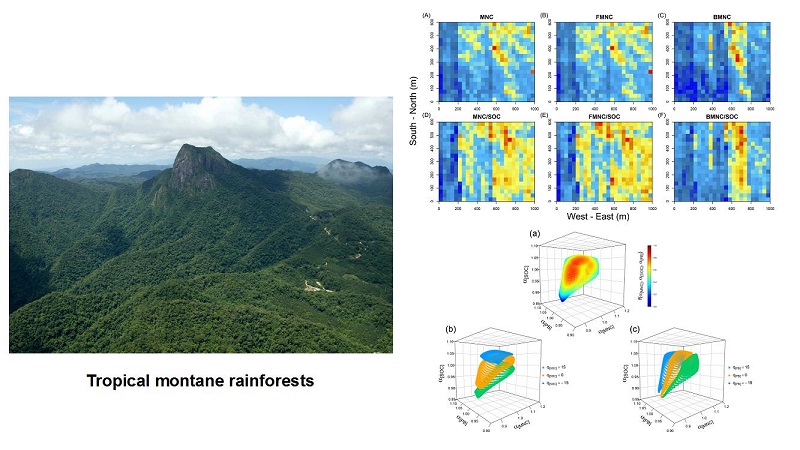Spatial variation and cross-scale associations of soil microbial necromass carbon in tropical mountain rainforests
Microbial necromass are an important source of soil organic carbon and play a crucial role in regulating the structure and stability of soil organic carbon pools. Tropical forests store over 60% of global forest carbon in living biomass, necromass, and soil carbon, approximately accounting for 25% of terrestrial biosphere carbon stocks and with the highest organic carbon turnover efficiency. The spatial distribution of plant, soil, and microbial carbon pools, along with their intricate interactions, presents a great challenge for the current carbon cycle research. Therefore, elucidating the spatial distribution pattern of microbial necromass carbon in tropical forest soil and its multi-scale correlation with other carbon pools is an effective approach to improve the predictability and adaptive management of forest carbon cycling.
The scientists from South China Botanical Garden, CAS, investigated the spatial distribution pattern of soil microbial necromass carbon and its cross-scale associations with plant and soil organic carbon pools based on a 60-ha BCI plot in tropical mountain rainforest at Jianfengling, Hainan. They found that: (1) soil microbial necromass carbon and its proportion in soil organic carbon in tropical montane rainforest exhibited large spatial variation and significant autocorrelation, with significant high-high and low-low clustering patterns, and soil, topographic, and plant properties were important driving factors; (2) soil microbial necromass carbon, soil organic carbon exhibited multifractal spatial variations and adhered to a power-law scaling; (3) microbial necromass carbon exhibited stronger spatial heterogeneity and weaker evenness compared with soil organic carbon and plant biomass, and the cross-scale spatial variability of microbial necromass carbon and soil organic carbon exhibited stronger and more stable correlations than those with plant biomass.
This study, for the first time, conducted a cross-scale analysis of spatial associations among plant, soil, and microbial carbon pools in tropical mountain rainforests. The findings are valuable for improving our mechanism understanding of tropical forest carbon cycling, supporting the development of carbon distribution models, and providing new insight into tropical forest carbon management. The relevant findings have been published in Science of The Total Environment and Journal of Environmental Management.
Links for papers:
https://doi.org/10.1016/j.scitotenv.2024.170986; https://doi.org/10.1016/j.jenvman.2024.120288

Figure 1. Spatial variation of soil microbial residue carbon and its cross-scale correlation with soil organic carbon and plant biomass in tropical mountain rainforests.
Note:MNC, Microbial necromass carbon, FMNC,Fungal necromass carbon; BMNC, Bacterial necromass carbon; SOC, Soil organic carbon; PB, Plant biomass.
File Download: